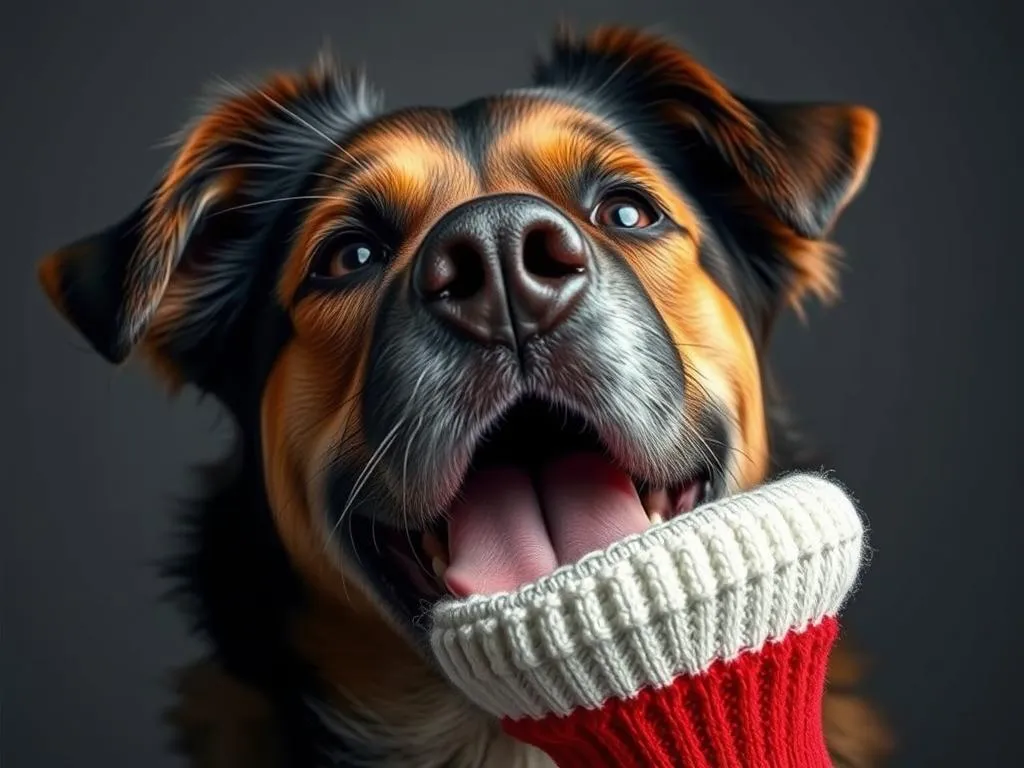
Dog health care is an essential aspect of responsible pet ownership. From routine check-ups to emergency situations, being proactive about your dog’s health can significantly improve their quality of life. One common issue many pet owners face is their dog ingesting foreign objects, such as toys, bones, and yes, even socks. If you find yourself in the situation where your dog ate a sock, it’s crucial to act quickly and know the right steps to take.
Understanding the Problem
Why Dogs Eat Socks
Dogs are naturally curious creatures. Their instincts drive them to explore and chew on various objects, including socks. Here are some reasons why dogs may find socks particularly appealing:
- Natural instincts: Dogs use their mouths to explore their environment much like humans use their hands. A sock, with its unique texture and scent, can be an intriguing object for a dog.
- Behavioral issues: Boredom, anxiety, or a desire for attention can lead dogs to chew on inappropriate items. If your dog is left alone for extended periods, they may resort to chewing on socks to occupy themselves.
- Common items: Beyond socks, dogs often consume other household items that can pose risks, such as shoes, strings, or plastic bags.
Potential Risks of Ingesting a Sock
The ingestion of a sock can lead to several potential risks for your dog:
- Obstruction in the digestive tract: Socks can easily become lodged in the intestines, leading to a blockage that can be life-threatening if not addressed.
- Choking hazard: If a sock is too large or if your dog tries to swallow it whole, it can pose a choking risk.
- Impact on overall health: Symptoms such as vomiting, lethargy, or abdominal pain may manifest if your dog ingests a sock. In severe cases, it can lead to more serious conditions, including peritonitis or intestinal rupture.
- Signs to watch for: Keep an eye on your dog for any unusual behavior, such as lack of appetite, vomiting, or signs of pain.
Immediate Steps to Take
Assess the Situation
The first step if you discover that your dog ate a sock is to assess the situation:
- Check the dog’s behavior: Is your dog acting normally, or do they seem distressed? Look for any signs of discomfort, such as panting or pacing.
- Signs that should raise concern: If your dog is vomiting, lethargic, or showing signs of discomfort, it’s essential to take action.
Contact Your Veterinarian
After assessing your dog’s condition, the next step is to contact your veterinarian:
- Importance of professional advice: A veterinarian can provide guidance based on your dog’s specific situation and health history.
- What information to provide: Be ready to share details such as your dog’s size, the type of sock ingested, and the timing of the incident.
- When to seek emergency care versus regular consultation: If your dog is showing severe symptoms, don’t hesitate to seek emergency care. Otherwise, your vet may ask you to monitor your dog at home.
Home Care Tips (If Advised by Vet)
If your veterinarian advises you to monitor your dog at home, consider the following:
- Monitoring the dog’s condition: Keep a close eye on your dog for any changes in behavior or health.
- Dietary changes: Your vet may recommend withholding food for a period or offering a bland diet to help soothe your dog’s stomach.
- Keeping the dog calm and comfortable: Create a quiet space for your dog to rest, reducing anxiety and stress.
Veterinary Intervention
Diagnostic Procedures
If your veterinarian determines that your dog needs further evaluation, they may perform several diagnostic procedures:
- Physical examination: A thorough check-up can help identify any immediate concerns.
- Possible imaging tests: X-rays or ultrasounds may be needed to determine if the sock is causing an obstruction.
- Importance of early detection: Early diagnosis can significantly impact the effectiveness of treatment.
Treatment Options
The approach to treatment will depend on the severity of the situation:
- Inducing vomiting: In some cases, the vet may recommend inducing vomiting to help your dog expel the sock before it causes harm.
- Endoscopy: This non-invasive procedure allows the vet to retrieve the sock without surgery if it is accessible.
- Surgical intervention: In more severe cases, surgery may be required to remove the sock from the digestive tract.
- Post-treatment care and monitoring: After treatment, your vet will provide guidelines for monitoring your dog’s recovery.
Prevention Strategies
Understanding Dog Behavior
To prevent future incidents, it’s important to understand your dog’s behavior:
- Identifying signs of anxiety or boredom: Recognizing when your dog is stressed or under-stimulated can help you address these issues before they lead to destructive behaviors.
- Engaging activities: Providing toys, puzzles, and interactive games can keep your dog mentally stimulated and less likely to chew on inappropriate items.
- Importance of regular exercise: Daily walks and playtime are essential for your dog’s physical and mental health.
Dog-Proofing Your Home
Creating a safe environment for your dog can help prevent them from ingesting foreign objects:
- Strategies to keep hazardous items out of reach: Store socks and other chewable items in areas that your dog cannot access.
- Using deterrents: Consider using bitter-tasting sprays on items you want to protect, discouraging your dog from chewing.
- Training tips: Teaching commands like “leave it” can be beneficial in preventing unwanted behaviors.
When to Seek Immediate Help
Symptoms Requiring Urgent Care
Certain symptoms should prompt you to seek immediate veterinary assistance:
- Severe vomiting or diarrhea: These can be signs of a serious issue that requires prompt attention.
- Signs of pain or distress: If your dog is whimpering, hiding, or exhibiting other signs of pain, it’s time to act.
- Changes in appetite or energy levels: A sudden lack of interest in food or play can indicate a problem.
Emergency Care Options
In case of an emergency, be prepared:
- Finding a 24/7 veterinary clinic: Know the location of your nearest emergency vet ahead of time.
- What to expect during an emergency visit: Your vet will assess your dog’s condition and may perform immediate diagnostic tests or treatments.
Conclusion
If your dog ate a sock, it’s crucial to act swiftly. Knowing the right steps to take can make all the difference in ensuring your dog’s health and safety. Regular veterinary check-ups and preventive care are vital for maintaining your dog’s well-being. By promoting good health practices and being aware of potential risks, you can help ensure that your furry friend lives a long, happy, and healthy life.









